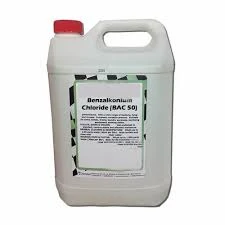coagulant and flocculant chemicals
Coagulant and Flocculant Chemicals An Essential Guide for Water Treatment
Water is a vital resource for human survival and the health of ecosystems. However, as populations grow and industries expand, the demand for clean water increases, leading to the necessity for effective water treatment processes. Among the various methods employed for purifying water, the use of coagulant and flocculant chemicals plays a crucial role in removing impurities, clarifying water, and ensuring its safety for consumption and other uses.
Understanding Coagulation and Flocculation
Coagulation and flocculation are fundamental processes used in water treatment to remove suspended solids, colloids, and other impurities. Coagulation is the initial step, where coagulants are added to water to destabilize and aggregate the fine particles. These particles, often negatively charged, repel each other in a natural state, making it difficult for them to clump together. Coagulants, such as aluminum sulfate (alum), ferric chloride, and polyaluminum chloride, are positively charged chemical agents that neutralize the charge of the particles, promoting their aggregation.
Once coagulation has occurred, the flocculation process begins. Flocculants, typically long-chain polymers, assist in forming larger clusters or flocs from the aggregated particles. This step is crucial as larger flocs can be easily removed from water through subsequent processes like sedimentation and filtration. The combination of these two processes helps to transform turbid, contaminated water into clear and clean water.
Types of Coagulants and Flocculants
1. Coagulants - Aluminum Sulfate One of the most common coagulants used in water treatment, aluminum sulfate is effective in removing turbidity and organic matter. It works best in neutral to slightly alkaline pH levels. - Ferric Chloride This coagulant is particularly effective in scenarios where phosphate removal is necessary. It not only helps in coagulation but also aids in sludge production and phosphorus precipitation. - Polyaluminum Chloride (PAC) PAC is a more recent development in coagulant chemistry. It offers advantages in terms of lower dosage requirements and effectiveness over a wider pH range compared to traditional coagulants.
2. Flocculants - Anionic and Cationic Polymers Flocculants can be classified based on their charge. Anionic flocculants are negatively charged and are useful in treating positively charged impurities. Conversely, cationic flocculants can assist in coagulating negatively charged contaminants. - Non-ionic Flocculants These are neutral and can effectively work in a wide range of applications, as they do not react with the charges of the suspended particles but instead help in the agglomeration of flocs.
coagulant and flocculant chemicals

Applications of Coagulant and Flocculant Chemicals
The application of coagulant and flocculant chemicals stretches across various industries beyond municipal water treatment. Industries such as agriculture, mining, and food and beverage also utilize these chemicals to manage wastewater and optimize processes. In agriculture, for instance, wastewater from livestock operations can be treated using these chemicals to reduce pollution and recover valuable nutrients. In mining, they help in the separation of valuable minerals from ore through enhanced settling and clarification processes.
Challenges and Considerations
While the benefits of using coagulant and flocculant chemicals in water treatment are significant, they come with challenges. The choice of the appropriate chemicals based on water quality, the specific contaminants present, and the desired outcomes is critical. Overdosing or underdosing can lead to inefficiencies or create additional problems, such as increased sludge production.
Moreover, environmental considerations must be taken into account. The residual chemicals that remain in treated water should not pose risks to aquatic life or human health. Consequently, regular monitoring and optimization of chemical dosages are required to ensure compliance with health and safety regulations.
Conclusion
Coagulant and flocculant chemicals are indispensable tools in the quest for clean and safe water. Their effectiveness in removing impurities and enhancing water clarity underscores their importance across various sectors. By understanding the types of coagulants and flocculants, their applications, and the challenges associated with their use, stakeholders can make informed decisions that contribute to sustainable water management practices. As the demand for clean water continues to grow, ongoing research and innovation will be essential in optimizing these processes for future challenges.
-
2 Phosphonobutane 1 2 4 Tricarboxylic Acid (PBTCA) – Superior Scale InhibitorNewsSep.01,2025
-
2 Phosphonobutane 1,2,4 Tricarboxylic Acid (PBTCA): Superior Scale & Corrosion InhibitorNewsAug.31,2025
-
Dodecyldimethylbenzylammonium Chloride: High-Purity DisinfectantNewsAug.30,2025
-
2-Phosphonobutane-1,2,4-Tricarboxylic Acid: Scale & CorrosionNewsAug.29,2025
-
Premium Isothiazolinones | Broad-Spectrum Biocidal SolutionsNewsAug.28,2025
-
LK-319 Special Scale And Corrosion Inhibitor For Steel Plants: Advanced Solutions for Industrial Water SystemsNewsAug.22,2025





